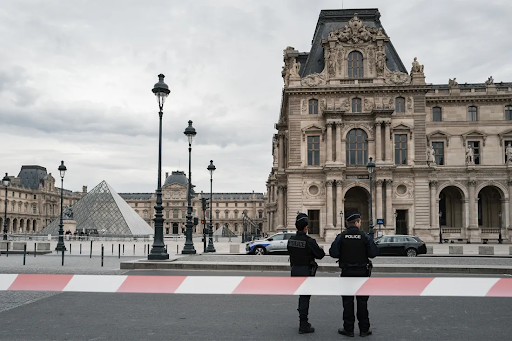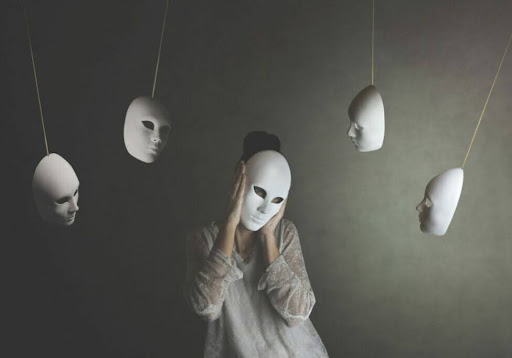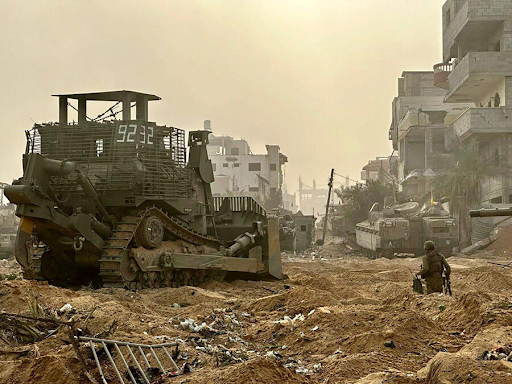Dark Knight Influence
The movies in the Dark Knight trilogy were very successful, more so than recent DC films. What can the DC movies of today take away from these beloved older films?

More recent Batman movies can take a page out of the book of the Dark Knight Trilogy.
January 8, 2021
In 1997, the world was introduced to the movie “Batman & Robin.” Many fans of the previous Batman movies despised it because of its poor story and simply not taking the character seriously, and the new people introduced to it disliked its campy tone. It simply wasn’t the Batman they knew and loved. The IMDB rating for it still sits at a 3.8. The public felt this movie was a sign of what was to come in future movies and wanted the franchise to end there. And it did end—the flop seemed to spell doom for Batman as a movie franchise. But then something happened.
Several years later, director Christopher Nolan decided to take on Batman, with a new, realistic take on the character. The first movie,“Batman Begins,” was released in 2005 and was met with immediate critical acclaim, and would spark two more movies that would continue to do incredibly well. To many fans, the films of Nolan’s “Dark Knight trilogy” are regarded as the quintessential Batman movies.
After the trilogy went out with a bang in “The Dark Knight Rises,” people were still asking for more Batman. However, instead of a continuation of the series, it was announced that Zach Snyder would instead make new movies with a different cast, in order to fit into a wider DC Cinematic Universe. The next Batman movies to be released were “Batman vs Superman” and “Justice League,” directed by Zach Snyder. While these movies did fine, they were nowhere near as celebrated as the Dark Knight films. Future DC movies should take note of these past movies’ success in order to create better films.
One of the biggest changes that DC should make is to the action. Action is perhaps the most prominent aspect of a superhero movie, so it’s crucial to get right. One success the Dark Knight trilogy had in this regard was making longer cuts, to let viewers see more of the action instead of blurry movement and confusion. While faster cuts can show fast-paced combat, it ends up leaving less to be interested in. In some ways, it can show laziness, as it means the actors don’t have to do as much choreographed practice. Besides that, action sequences should include more than just hand to hand combat. For example, take one of the intense car chase scenes from “The Dark Knight.” Or the stealth take-outs from “Batman Begins.” Moreover, the action should be set in diverse areas with amazing sights. Whether it’s a snowy mountain, the busy streets among skyscrapers, or the silent and ominous docks, there is a lot of variety in the Dark Knight trilogy. Meanwhile, the newer movies seem to have much less diverse fights. Most seem to be solely a huge combat fight between the main characters and the villain in dark, cramped spaces that leave much to be desired.
Another problem is computer-generated imagery, or CGI, which is used in most movies in order to give out-of-this-world experiences. But the problem is overusing it. When a movie depends too heavily on CGI, it drags your mind out of the movie and really takes you out of the moment. Something that is highly appreciated in the Dark Knight trilogy is the amazing use of practical effects rather than CGI. One of the principal examples of this is when, according to Polygon, TNT was detonated in a truck and had the truck completely flip in the streets of Chicago for the car chase scene in “The Dark Knight.” Effects like these make the action seem more real and visceral. Even when the movies do use some CGI, it is mixed in well with the practical effects so that it is barely noticeable. But unlike the outstanding amount of effort found in the Dark Knight trilogy, Zach Snyder decided to settle for CGI for most of the effects in his films; to handle shots the easiest way possible. This really affects the amount of enjoyability from the film, especially when it takes away from the relatability.
This ties in with the use of realism. Both the new movies and the Dark Knight Trilogy attempt to pull off a realistic take on the superhero role. The trilogy takes this challenge on by first introducing the problem of being a vigilante, with Batman having to go against the police force and take heavy criticism. Not only that, but all of the villains are realistic in most cases. No matter what they are trying to do, their motivation is clear and they are more or less limited by the extent of human capabilities. They are played by real people who use their amazing skill to prove to you how real they could be. You don’t need to stress your thinking about how this could be connected to your real life, which allows you to connect and feel engrossed into the movie while watching it. Zach Snyder attempted something similar by trying to connect the DC cinematic world with the real life world. However, the Zach Snyder movies have CGI aliens or monsters as prominent enemies. This is very different from the grounded, realistic conflicts of the Dark Knight trilogy, and undoes the effort of realism.
With the newest movies of the DC Cinematic Universe not doing as well as hoped, it’s important to look at the reasons why. With the Syder Cut of the Justice League movies set to release in 2021, we can see what the movie was originally envisioned to be. It can give us some insight on where things went wrong. But in the end, we as viewers of these movies can only hope that they can take notes about what made Christopher Nolan’s masterpieces that are the Dark Knight trilogy in the first place. And we can hope that the filmmakers are taking this into consideration to make the upcoming “The Batman” film, directed by Matt Reeves, the best it can be.








